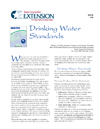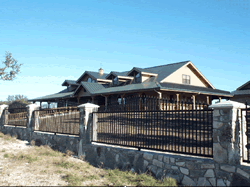 Single Households
Single Households
From a regulatory perspective, the Texas Commission on Environmental Quality (TCEQ) has rules that only apply to a rainwater system that supplies potable water for a public water system or for any business that manufactures food or beverages. TCEQ does not set minimum treatment requirements for rainwater that will be used as a drinking water source for a single household nor do they regulate nonpotable uses of rainwater. The TCEQ does, however, offer guidelines in its publication Harvesting, Storing and Treating Rainwater for Domestic Use.
Public Water Systems
To assure that the water produced by a public water system is chemically and biologically safe to drink, the TCEQ has adopted regulations regarding the design, operation, and maintenance of public water systems and the quality of the water they produce. A public water system is defined as any system that serves at least 25 people per day for at least 60 days each year or that serves at least 15 service connections.
NSF-Approved Components
NSF International has developed a test protocol that provides independent verification of the safety of the materials used in the production of rainwater harvesting systems. This protocol evaluates materials used in rainwater catchment systems, such as roofing materials, coatings, paints, liners and gutters.
Testing involves exposing catchment system product samples to extensive accelerated outdoor weathering. The systems and system materials that have successfully been tested by NSF under P151 are listed in the NSF Product and Service Listing.
Related Resources
In-Home Use Web Course – Click here for a free, five-part course about using rainwater for in-home use. It covers basics, proper installation techniques, sizing, treatment, and maintenance.
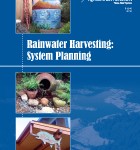 Rainwater Harvesting: System Planning
Rainwater Harvesting: System Planning
This is a copy of the latest rainwater harvesting manual. This manual was created to help contractors, consultants, land owners, and others plan rainwater harvesting systems. The manual addresses catchments that are less than 50,000 square feet and can store less than 100,000 gallons. It covers all aspects of planning, installing, operating and maintaining such systems, as well as the distribution of water for landscapes, pets, wildlife, livestock, and private potable and nonpotable in-home rainwater systems.
This publication explains the federal safety standards for drinking water provided by public water supply systems.
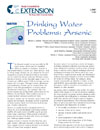 Drinking Water Problems: Arsenic
Drinking Water Problems: Arsenic
High levels of arsenic in drinking water can poison and even kill people. This publication explains the symptoms of arsenic poisoning and common treatment methods for removing arsenic from your water supply.
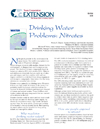 Drinking Water Problems: Nitrates
Drinking Water Problems: Nitrates
This publication explains the federal safety standards for drinking water provided by public water supply systems.
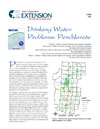 Drinking Water Problems: Perchlorate
Drinking Water Problems: Perchlorate
Perchlorate is a potential contaminate of well water that can have harmful effects on human health. Methods of removing perchlorate from water are described and illustrated.
 Harvesting, Storing, and Treating Rainwater for Domestic Use
Harvesting, Storing, and Treating Rainwater for Domestic Use
This publication will help you design and operate a roof-based rainwater harvesting system to supply drinking water for you and your household. It focuses on the information you need to make sure that your system will produce water that is chemically and biologically safe to drink.
 Rainwater Harvesting: Guidance for Public Water Systems
Rainwater Harvesting: Guidance for Public Water Systems
This is a guide for public water systems that collect and treat rainwater and distribute it as potable water. It offers a general overview of the TCEQ rules that apply to public water systems that use rainwater as a drinking water source and to systems that use it as a source for a commercial bottling operation.
 Shock Chlorination of Stored Water Supplies
Shock Chlorination of Stored Water Supplies
Treatment of drinking water to improve its sanitary or bacteriological quality is referred to as disinfection. Shock chlorination is one disinfection method employed by public suppliers to reduce bacterial contamination of water.
